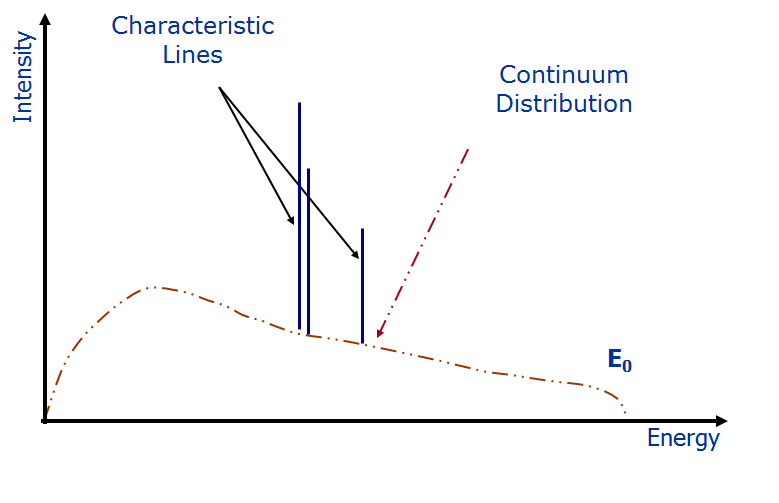2.4 Mechanisms of x-ray production
X-rays can originate from different interactions of radiation or charged particles with the atom. Whenever charged particles (electrons or ions) of sufficient energy hit a material, x-rays are produced. X-rays can be also generated when the atom is ionized by photons (either gamma or x-rays). A classic example is the x-ray production in an x-ray tube, where the electrons released by a hot cathode are accelerated to a high velocity by using high voltage and hit the anode of the tube. As a result of the interaction of the electrons with the material of the anode x-rays are produced with a continuous distribution of energies ranging from zero to the maximum energy of the electrons (continuous radiation) and as characteristic x-rays emitted by the element constituting the anode.
